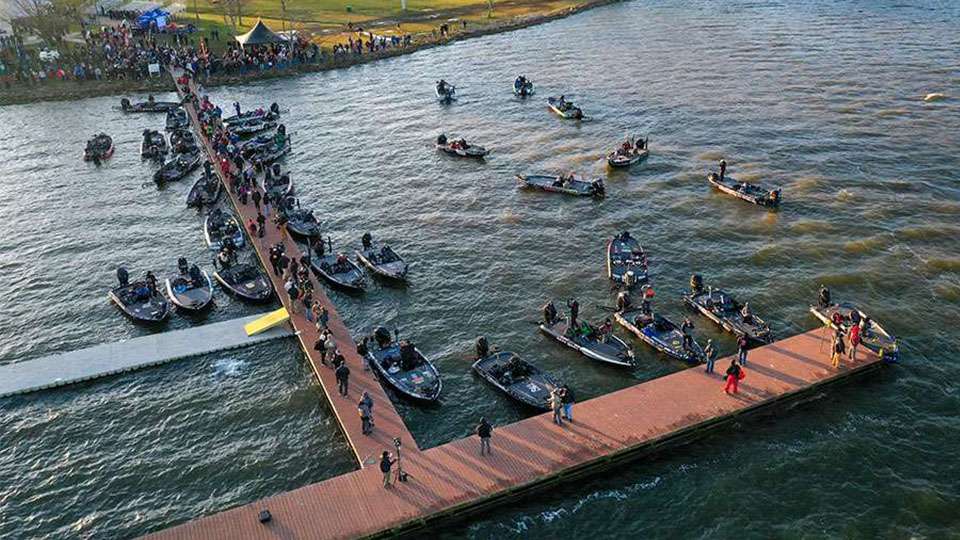
Founded in 2006, the Bassmaster Elite Series fields the nation’s top bass anglers for a nine-event season that visits a geographically diverse schedule of fisheries. Intentionally varied to provide fans a dynamic look at the sport’s various venues and techniques, the Elite Series requires competitors to master a broad range of baits and tactics.
Seeking largemouth, smallmouth and spotted bass (depending on geography), this ultra-competitive series finds anglers matching wits with their target species, while calculating a myriad of seasonal, meteorological and habitat factors. Competing at the sport’s highest level, Elites put on an entertaining and educational show through which countless fans embrace the sport and improve their own fishing abilities.
From each Elite tournament’s landing page on Bassmaster.com, BASSTrakk provides running stats on fish catches and estimated weights (numbers are unofficial until weigh-ins), while the Bassmaster LIVE team provides on-the-water coverage and analysis of each day’s competition.
Tournament format
Bassmaster Elite tournaments are four-day events, typically Thursday-Sunday, unless delayed by weather or other unforeseen factors. Tournament waters are off limits to Elites 28 days prior to competition, but anglers spend three “practice” days on the fishery directly preceding the event. During this time, they seek to “break down” the lake by prioritizing key areas, analyzing water quality — temperature, depth, lake level rising or falling — and identifying productive baits and techniques.
Competition days are eight hours long. This includes fishing time, as well as on-the-water travel time, so anglers must plan their days to allow sufficient time to reach multiple fishing spots and return at their designated check-in time.
The full field competes the first two days, after which the field is cut to the Top 50 for Day 3’s Semifinal Saturday round. The Top 10 compete on Championship Sunday, with a winner determined by the heaviest four-day aggregate weight.
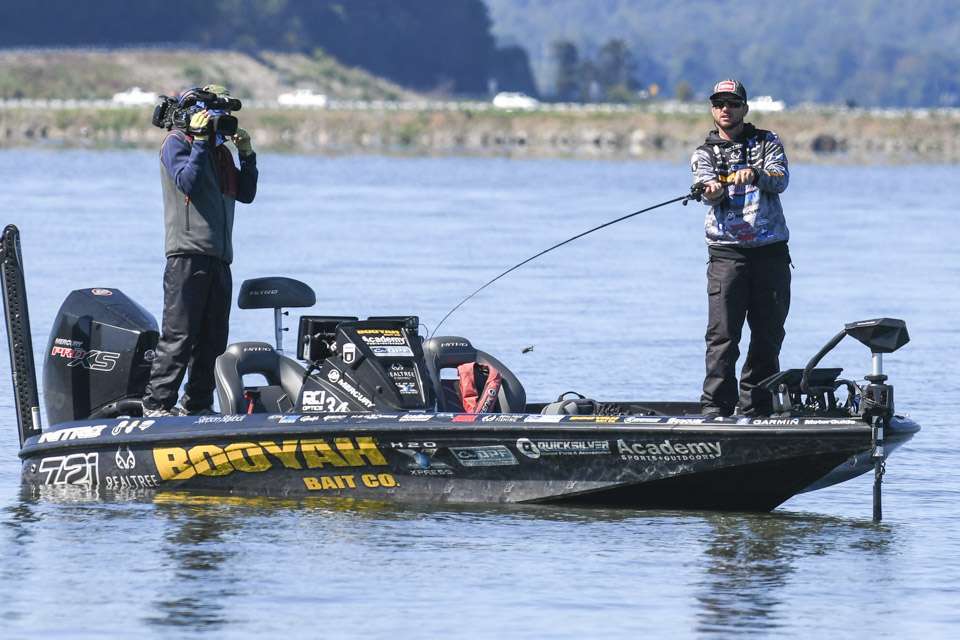
Daily leaders are determined by catch weight, which accumulates as the tournament progresses. Each competitor is allowed to bring a five-bass limit to the daily weigh-in. Each “keeper” must be at least 12 inches in length, unless local regulations state otherwise.
Once an angler reaches their five-fish limit during the fishing day, they can “cull” smaller fish by replacing them with larger ones. If fish care, boating safety, etc., necessitates, anglers may temporarily place a sixth bass in their livewell, but they may not continue fishing until they’ve culled down to five.
At the weigh-ins: Anglers measure small fish on the water to confirm keeper status, but official measurements and live/dead determinations are made at the “bump tank,” where a tournament official inspects each angler’s catch. After this examination, fish are safely kept in ventilated bags and held in aerated water tanks until the angler is called to the stage where the weighmaster records the official weight and the emcee briefly interviews the angler.
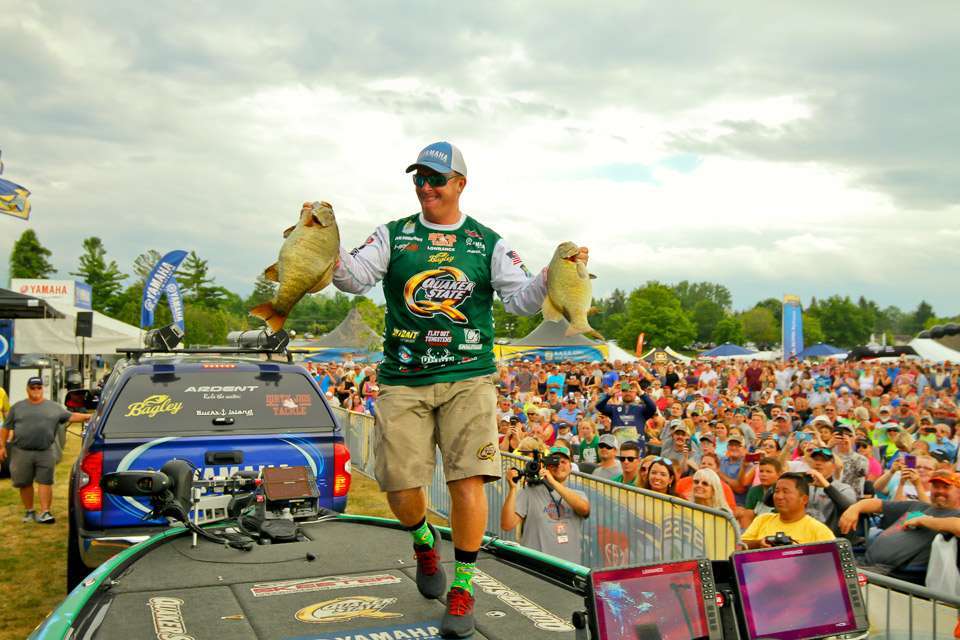
Immediately after the official weighing, fish are quickly transported to the large aerated holding tanks aboard a release boat positioned near the stage. After weigh-ins conclude, the release boat team carefully returns the fish to the lake.
Modern aerated livewells in bass boats are highly efficient at keeping fish alive, but Elite anglers go to great lengths to ensure fish safety and survival. Adding ice to livewell water helps maintain a comfortable temperature, while liquid livewell treatments remove waste chemicals, add electrolytes and help fish maintain their protective slime coating.
Tiebreakers: While ties stand on a tournament’s first day, subsequent days see ties at all levels broken by heaviest single-day weight. In the event of a first-place tie at the end of an Elite tournament, a sudden-death fish-off (first legal bass) determines the winner.
Impartial observers
Each competitor is paired with a Marshal who’s responsible for verifying catches and confirming rules adherence. Marshals do not assist in any aspect of fishing, but they often help with BASSTrakk updates, photos and Skyping with the Bassmaster LIVE studio.
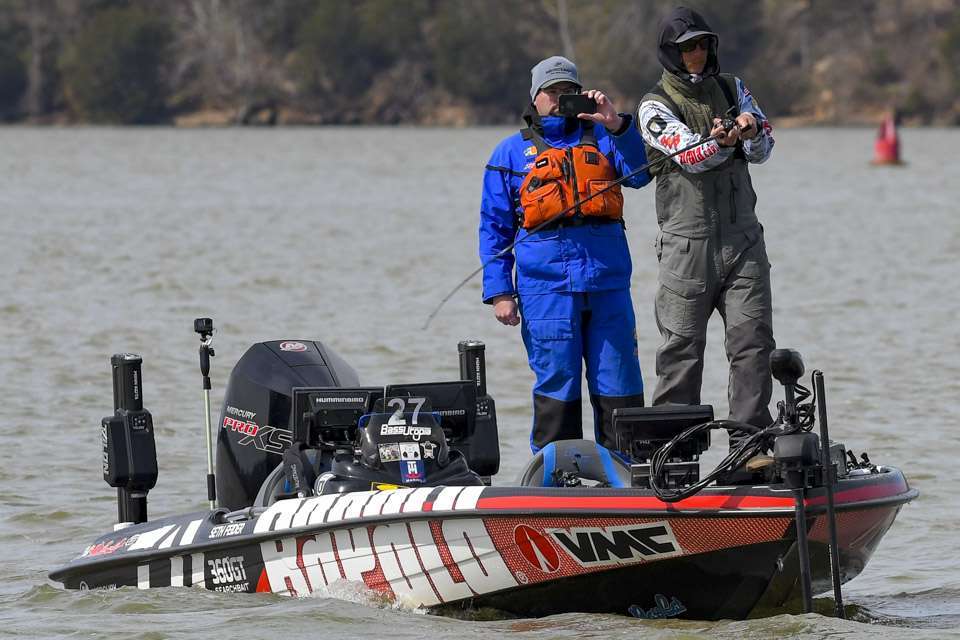
Occasional angler penalties include arriving late for check-in, dead fish, over the limit and fishing in off-limits zones. Anglers may self-report infractions that occur on the water, or competitors may file a protest for unreported infractions. Depending on the rule, an angler may incur daily catch weight reductions, disqualification of a day’s entire catch or a tournament disqualification.
The rewards
Having qualified through the Basspro.com Bassmaster Opens series, Bassmaster Elite anglers compete for the prestigious first-place trophy, along with cash prizes starting at $100,000 for the winner. Each subsequent finisher receives a cash amount based on a descending scale.
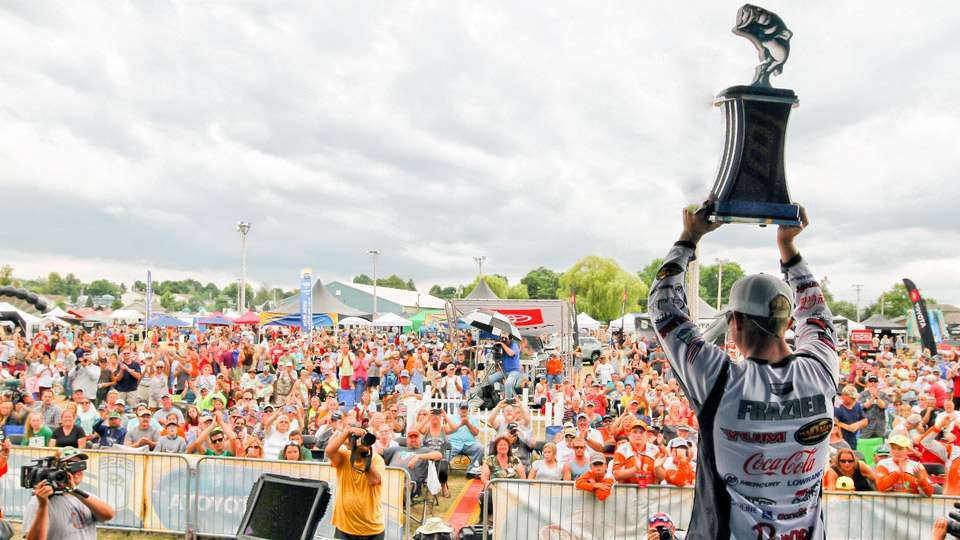
Each event also awards a daily Big Bass prize of $1,000 and another $1,000 for the Overall Big Bass.
Throughout the season, anglers amass points based on tournament finishes for the Bassmaster Angler of the Year (AOY) award, which earns $100,000. First-year Elite anglers also compete for Rookie of the Year.
The top 39 AOY finishers qualify to fish the Bassmaster Classic, the sport’s grandest event.
Tournament strategy
Takeoff order: The first three days of an Elite tournament see anglers take off in groups, known as “flights,” with order randomly selected and reversed each subsequent day. This timing often impacts decision making, as some patterns, such as an early morning topwater bite with schooling fish may be over by the time an angler in the last flight arrives at the spot.
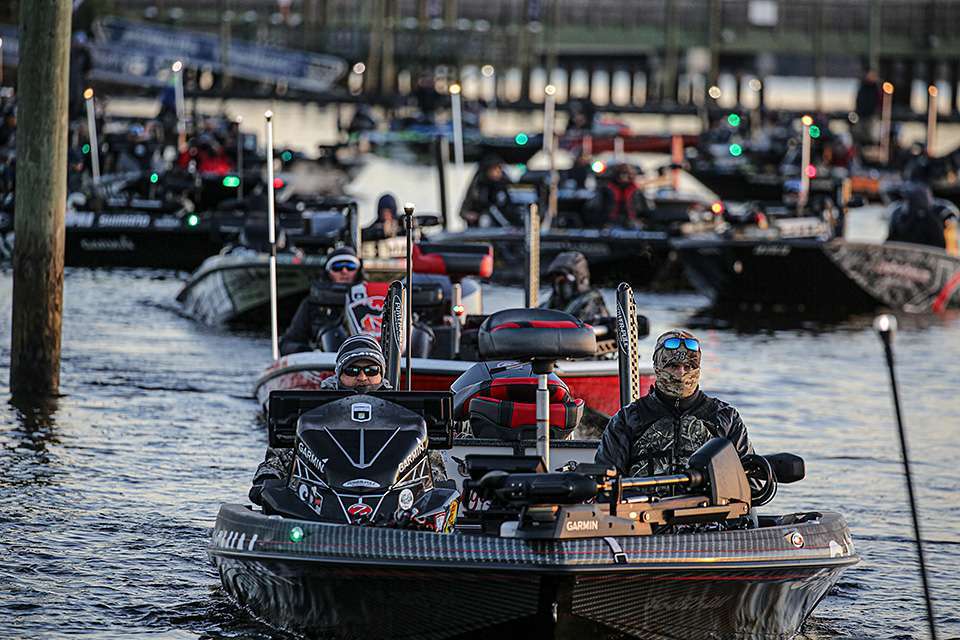
Conversely, afternoons often present particular opportunities like a spike in spawning fish activity or an increase in dam-generated current later in the day. Here, later flights have more time to capitalize on the afternoon opportunities.
Tidal influence: Even though Elite events target freshwater species, waters linked to coastal areas feel the ocean’s influence. Tidal fisheries, such as Florida’s St. Johns River or South Carolina’s Winyah Bay, add another layer of consideration, as water levels rise and fall each day. These depth fluctuations position fish both in terms of depth preference and feeding opportunities. Rising water increases access to shallow areas, while falling tides drain them and pull fish to the outer edges.
With tides advancing about an hour each day, anglers must calculate when they need to fish their key spots and factor in the day-to-day differences. Some may opt to “camp” in a promising area and fish all stages of the tide, while others prefer to “run the tide” — moving progressively farther up or down the tidal range to fish a particular stage of the incoming or outgoing cycle.
Replicate for success: Ideally, tournament anglers seek to find a “pattern,” a particular method for consistently catching fish with certain baits/techniques and/or in well-defined habitat scenarios. When patterns are not available, anglers typically resort to broader strategy known as “junk fishing.” Here, an angler keeps 10 or more bait options on their deck and simply uses whichever one best fits the scenario they encounter. This could run the gamut from walking a topwater frog over matted grass, to flipping a jig into a laydown (fallen tree), to skipping a worm under docks.
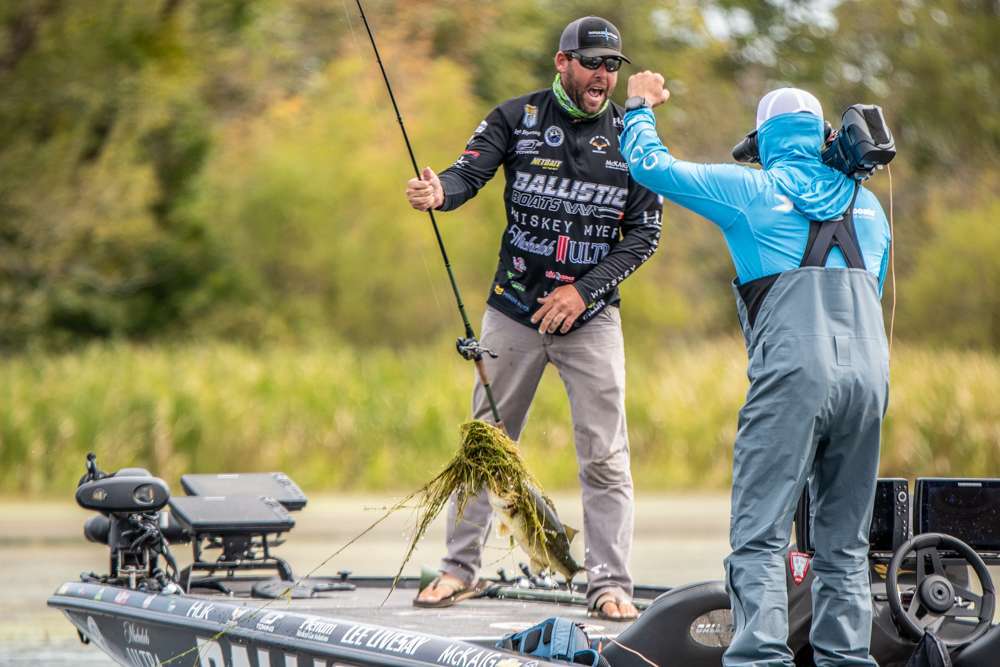
Weather changes and seasonal transitions — particularly summer to fall — commonly find junk fishing most productive.
Resource management: When anglers locate schools of fish, or particular areas with good numbers of fish, they’ll often catch a solid limit for the first day or two of the event and “save” the rest for the Semifinal Round and Championship Sunday. Once you catch and release a bass, it’s less likely to bite the following day. Therefore, fighting the temptation to continue catching and culling up for the biggest daily limit possible often proves strategically beneficial later in the event when an angler knows he or she can depend on catching a competitive bag.

